
- Home
- India
- World
- Premium
- THE FEDERAL SPECIAL
- Analysis
- States
- Perspective
- Videos
- Sports
- Education
- Entertainment
- Elections
- Features
- Health
- Business
- Series
- In memoriam: Sheikh Mujibur Rahman
- Bishnoi's Men
- NEET TANGLE
- Economy Series
- Earth Day
- Kashmir’s Frozen Turbulence
- India@75
- The legend of Ramjanmabhoomi
- Liberalisation@30
- How to tame a dragon
- Celebrating biodiversity
- Farm Matters
- 50 days of solitude
- Bringing Migrants Home
- Budget 2020
- Jharkhand Votes
- The Federal Investigates
- The Federal Impact
- Vanishing Sand
- Gandhi @ 150
- Andhra Today
- Field report
- Operation Gulmarg
- Pandemic @1 Mn in India
- The Federal Year-End
- The Zero Year
- Science
- Brand studio
- Newsletter
- Elections 2024
- Events
Once a sight of guerrilla warfare, Cu Chi Tunnels Network leads the way to Vietnam’s economic resurgence

As he sells refreshing Vietnamese Highlands Coffee to tourists visiting the Cu Chi tunnels on the outskirts of Sai Gon (now Ho Chi Minh city), 87-year-old Nguyen Van Duc recalls his tough life as a guerrilla fighter sneaking through the huge network of tunnels to attack “French colonialists” and “US Imperialists” during Vietnam’s three-decade independence war (1946-75).“I belong...
As he sells refreshing Vietnamese Highlands Coffee to tourists visiting the Cu Chi tunnels on the outskirts of Sai Gon (now Ho Chi Minh city), 87-year-old Nguyen Van Duc recalls his tough life as a guerrilla fighter sneaking through the huge network of tunnels to attack “French colonialists” and “US Imperialists” during Vietnam’s three-decade independence war (1946-75).
“I belong to Kontum, which is up north, but I settled down here after the Americans left in 1975 when I married a Cu Chi girl who ran our spy network in this area. We bought land for farming but now it is better to run this coffee shop because the Cu Chi Tunnel Network has become such a huge tourist attraction,” says Nguyen Van Duc, who joined the Viet Minh resistance force to fight the French in 1949, when he only 13.
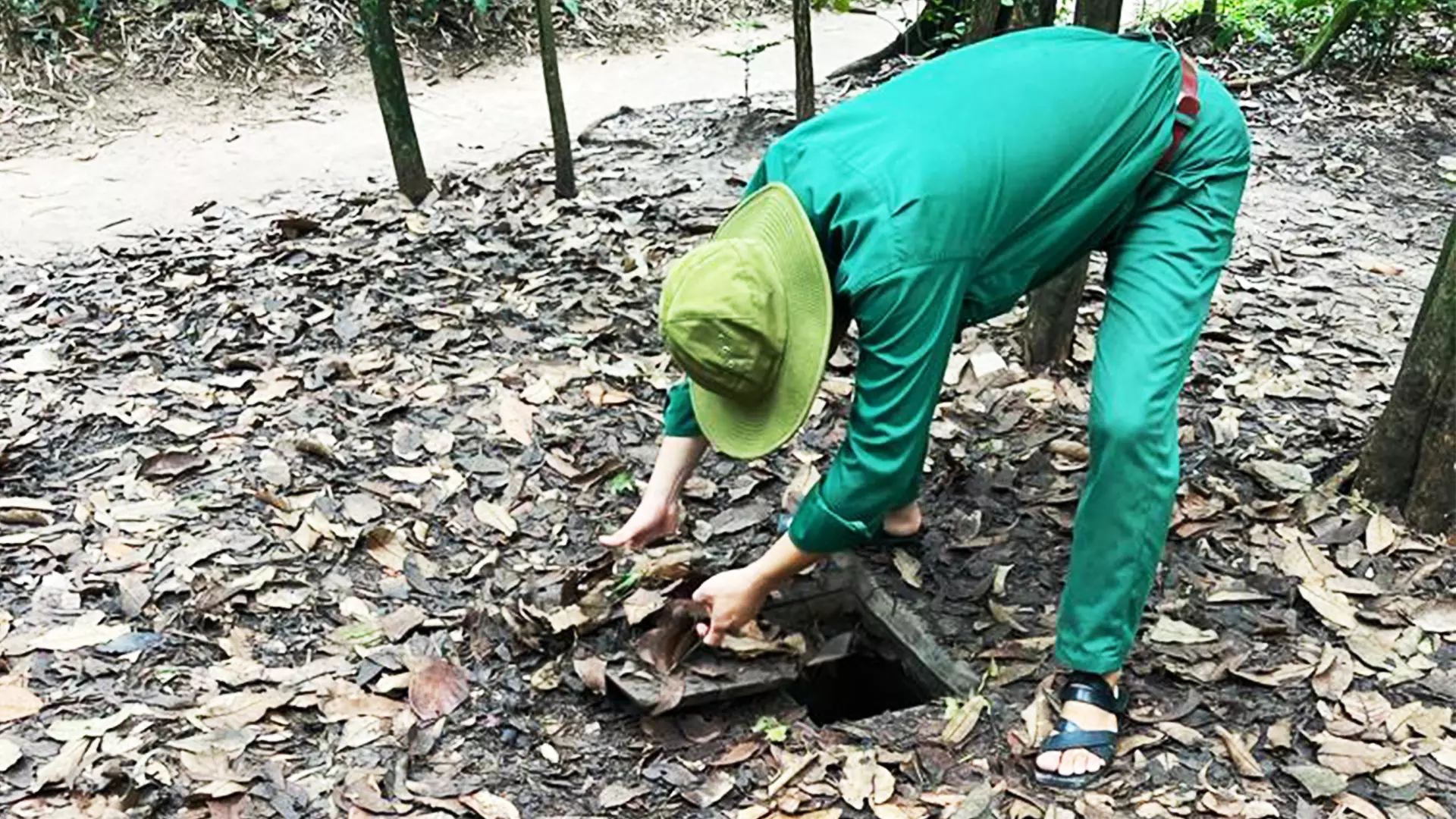
A man lifts the iron lid which leads to the tunnel network. Photos: Md Kaimuzzaman Rana
“Life was all about war and survival because when the French left, in came the Americans,” says Duc — grandpa to all in the area — whose transformation from a vicious guerrilla fighter to an entrepreneur capitalising on Cu Chi’s, and Vietnam’s tourism boom, symbolised the amazing War and Peace turnaround of Vietnam, making it one of the fastest-growing Asian economies.
An estimated 1.5 million visitors, nearly half of them foreigners, and top visiting officials, visit Cu Chi every year and the numbers are shooting up as Vietnam aggressively promotes in-bound tourism, showcasing its unique beautiful landscape and rich history, especially its imperial past and long years of resistance to foreign colonialists.
Vietnam has welcomed 11.2 million foreign tourists in the first 11 months of 2023, up 69% over the same period in 2022. South Koreans and Americans accounted for more than 40% of tourist arrivals.
“The foreign tourist arrivals to the country was expected to regain its 2018 peak of 18 million in 2024 and cross the 20 million mark by end of 2025. It may sound ambitious, but the post-Covid recovery has been phenomenal,” Vu The Binh, chairman of Vietnam Tourism Association, told The Federal.
In 2019, tourism accounted for 9% of Vietnam’s GDP, but that plummeted to 2% in 2021 at the peak of Covid. Vietnam’s per capita GDP of $3,756 (2021) compares favourably with India’s $2,256 in same year but the gap between two of Asia’s fastest-growing economies may widen in the next two years.
Economic giant
Vietnam has grown its GDP by 6-7% annually, since 2016 with steady growth for more than a decade. Despite a decline in foreign direct investment (FDI) in 2021 due to the pandemic, FDI has generally grown at a rapid and constant pace since 2011, exceeding $16 billion in 2019.
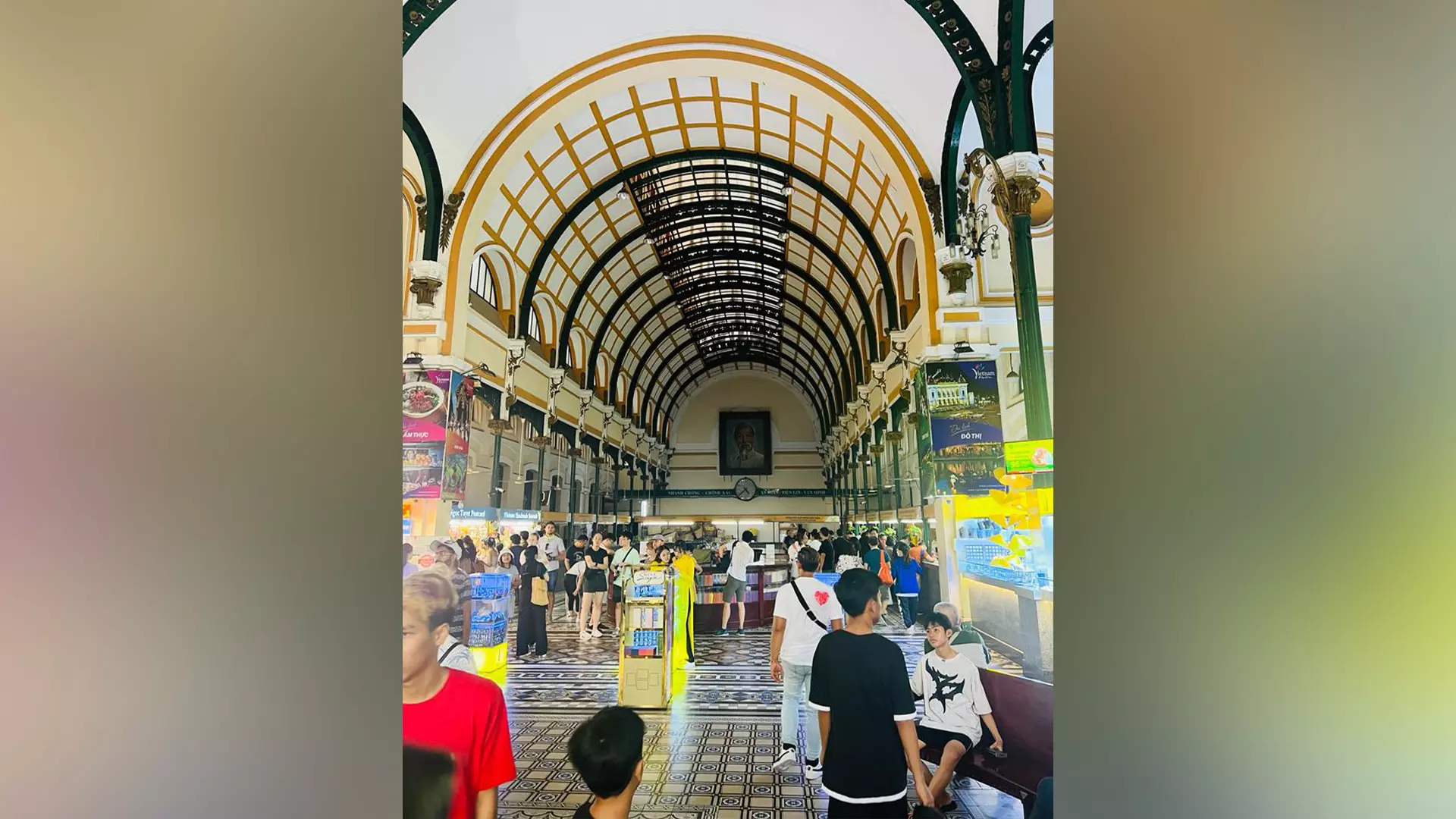
The Iconic Saigon Post Office.
Vietnam’s proximity to China as well as other countries in Southeast Asia ensures it can remain competitive and connected to global supply chains.
“Businesses are increasingly choosing Vietnam to supplement their China operations with low-cost inputs sourced from production facilities in a nearby alternate market,” says Pritesh Samuel, head of Business Intelligence at Vietnam-based Dezan Shira & Associates.
“In addition to its geographic proximity to China, Vietnam offers several advantages to manufacturers planning to relocate their business, including lower costs, an attractive business environment, and acts as a hedge against unpredictable scenarios which may affect supply chains in China, such as potential trade shocks. As a result, Vietnam is experiencing unprecedented growth relative to similarly emergent countries,” Pritesh said.
Vietnam’s middle class, expected to reach 95 million by 2030 with an average GDP per capita of $7,000 by 2035, is also spreading to areas apart from traditional hubs like Hanoi and Ho Chi Minh City. In addition, the female participation rate is one of the highest, trumping even more developed countries like the US and Singapore.
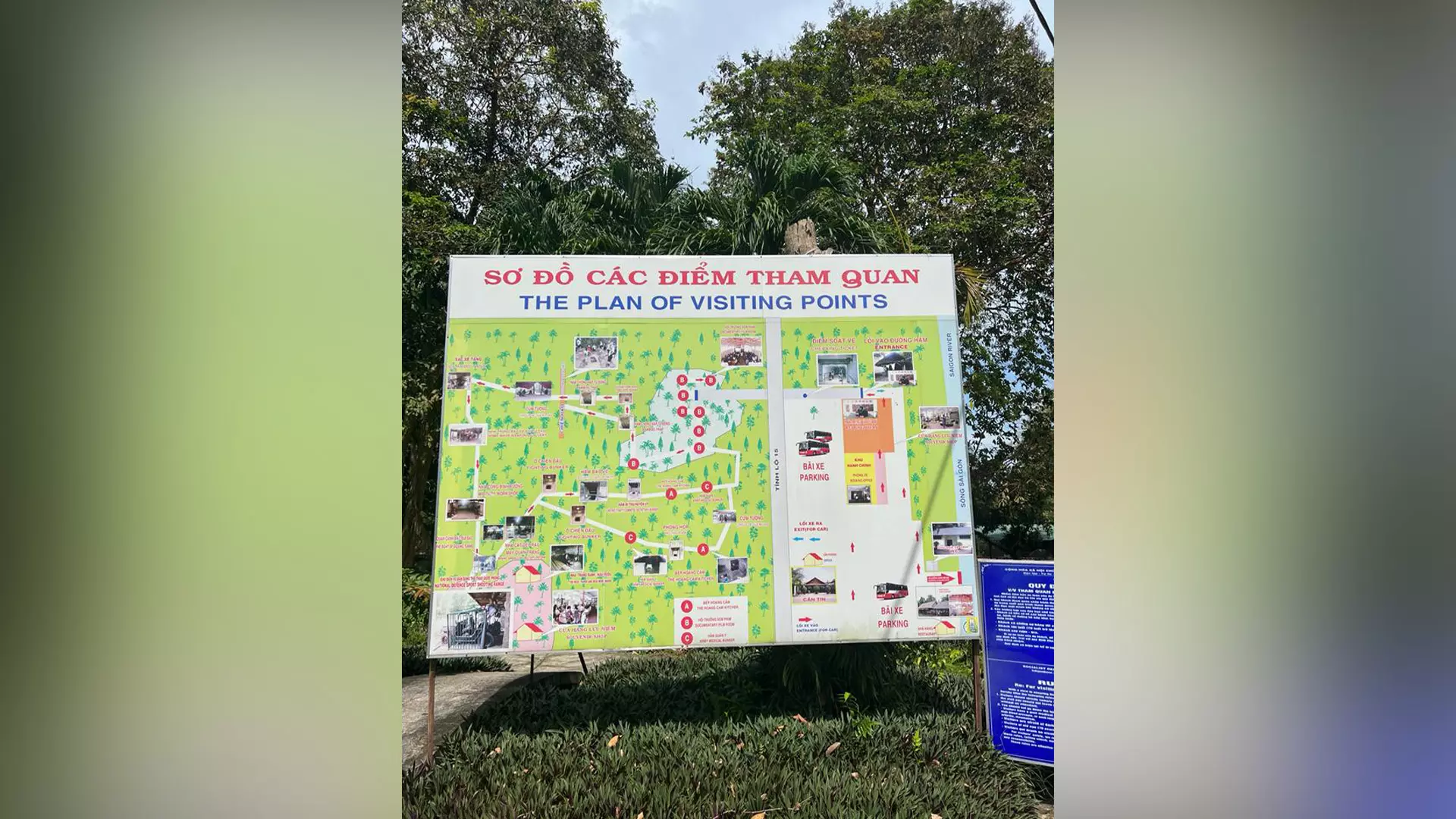
The tunnel guide in Cu Chi.
“Vietnam is a social republic and a one-party state, which has allowed for political stability,” says political commentator Cat Hoang Anh, who works for Voice of Vietnam, the official radio broadcaster. “This has also translated to a stable business environment allowing businesses to thrive.”
Tourism thrust
In its bid to boost its GDP and per capita income to improve living standards, Vietnam has turned to tourism in a big way.
The Cu Chi Tunnels Network and its two war museums (Hanoi’s Military History Museum and Ho Chi Minh City’s War Remnants Museum Museum), alongside the imposing Ho Chi Minh Mausoleum — where lies the embalmed body of Uncle Ho, Supreme Leader of the resistance war — constitute the “War Memory” component of any group tour package offered to foreign tourists.
Ho Chi Minh city mayor Phan Van Mai told The Federal that a proposal has been sent to Defence Ministry to move UNESCO to recognise Cu Chi Tunnels Network as a World Heritage site.
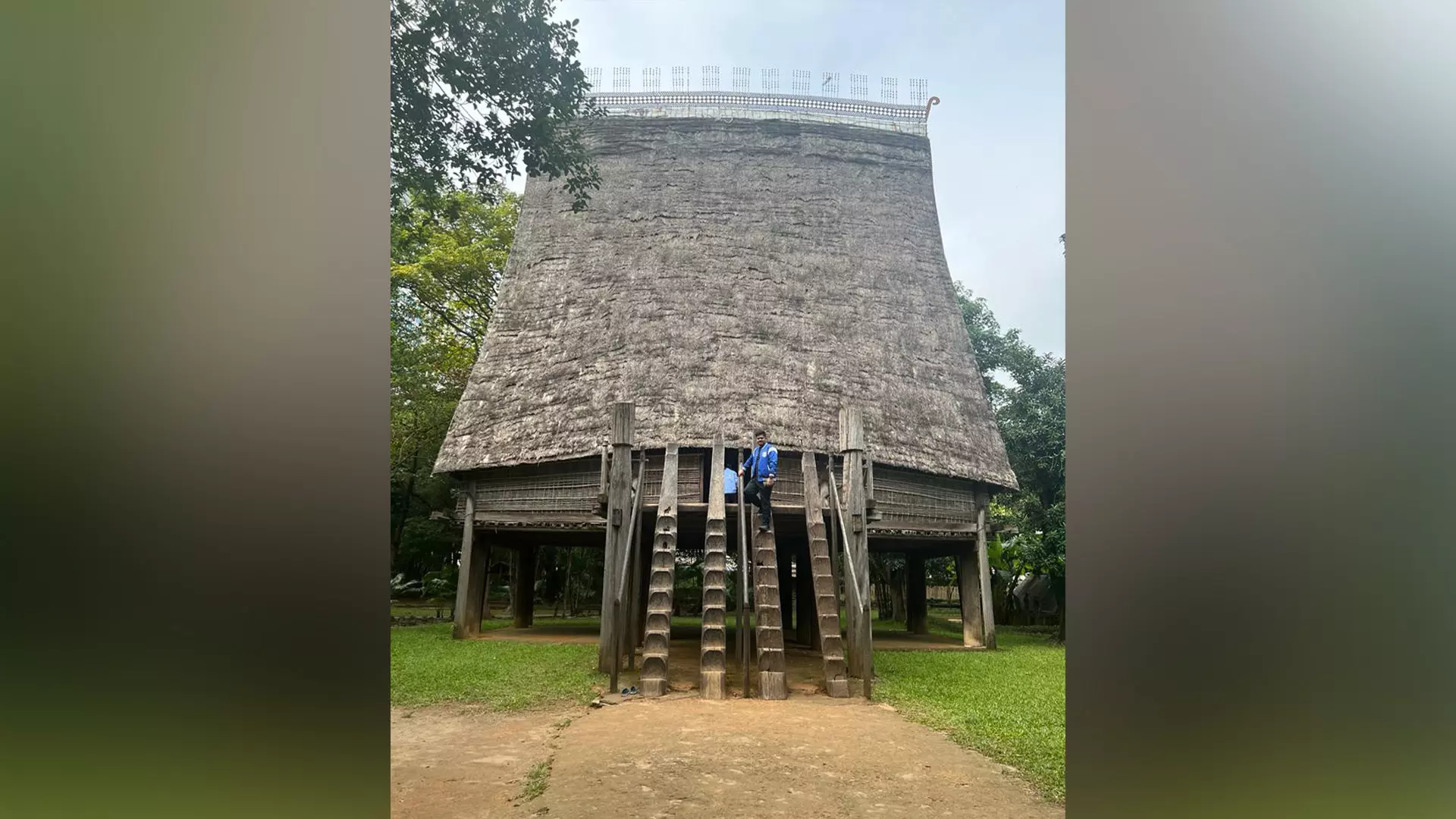
The hut that covers the tunnel entry.
“Cu Chi Tunnels are a symbol of the never-say-die spirit of the Vietnamese people. You don’t just showcase your monuments or history, you showcase your people,” says the 50-year Mai. “Visitors are able to experience the resilience and unyielding will of the people who lived in the tunnels during wartime.”
Vietnam is already home to eight UNESCO World Heritage sites, including Phong Nha-Ke Bang National Park, My Son Sanctuary, Hoi An, the Complex of Hue Monuments, and the Citadel of the Ho Dynasty, Ha Long Bay, the Trang An Landscape Complex, and Thang Long Imperial Citadel, which are located in the north. India has 42 sites that UNESCO recognises as World Heritage.
Relic of the resistance war
“If the Cu Chi Tunnels network is recognised, it will be the first UNESCO World Heritage Site in the south of Vietnam, where the resistance war was most intense during the US intervention,” reminds Phan Van Mai.
In 2015, the historic area was recognised as a special national relic site. For tourism purposes, more than 120 km out of over 200 km of the tunnels have been preserved.
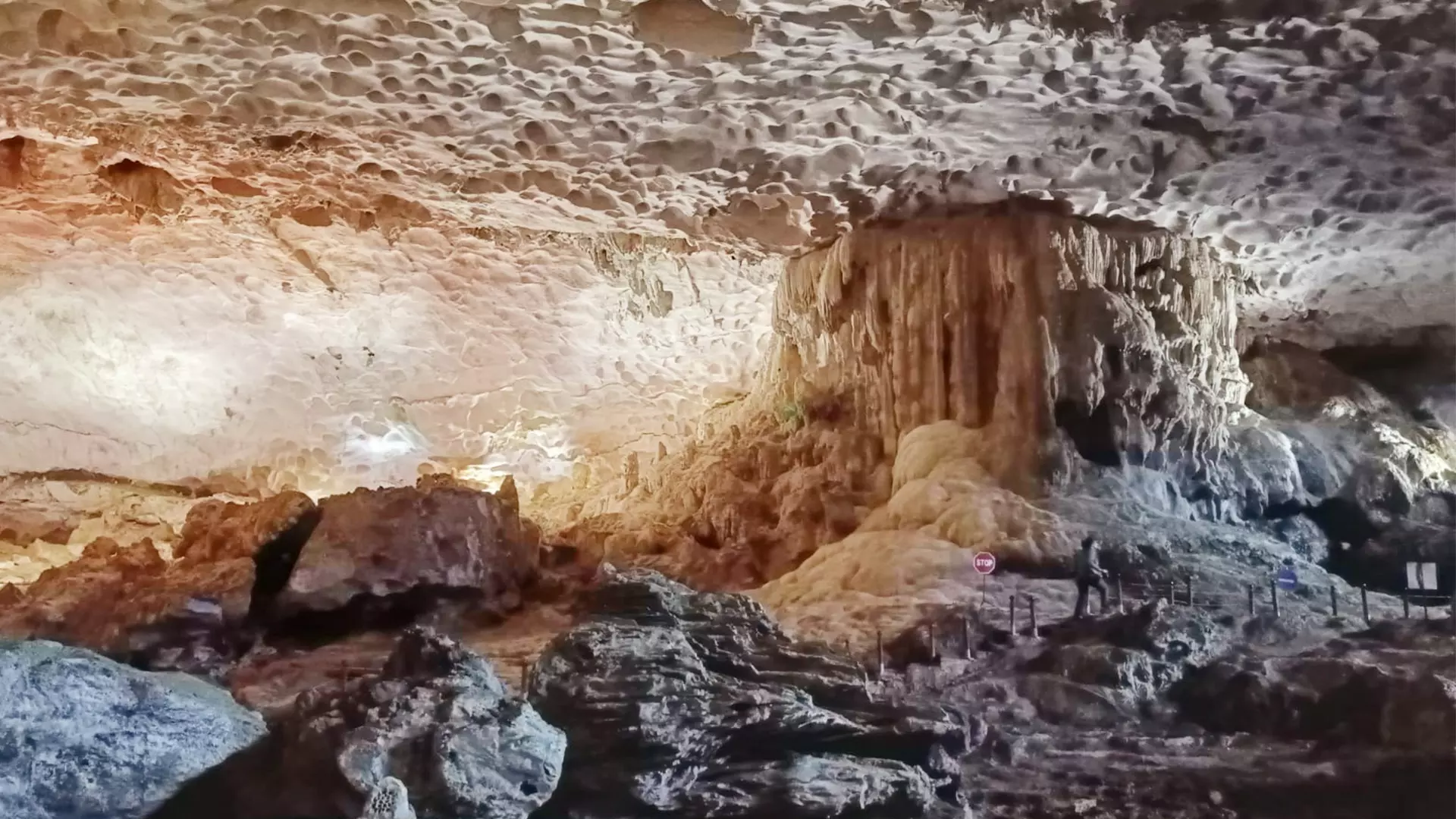
The limestone caves in Halong Bay.
The gigantic underground tunnel system of Cu Chi, served as hiding spots for Vietnam revolutionary troops to discreetly commute between regions and evade French scouts.
During the Vietnam War, the network had been expanded into an assembly complex for Communist guerrilla soldiers to house troops, transport communications, and supplies, receive medical treatments, take shelter from aerial bombardment, and mount surprise attacks, after which they could disappear underneath the ground.
As a military headquarters, Cu Chi Tunnels played a pivotal role in the Vietnamese forces’ resistance to the American army in South Vietnam and served as an isolated stronghold to plan strategies and launch successful military campaigns, notably the victorious Tết Offensive in 1968.
Cu Chi Tunnels are listed in the Top 7 must-visit epic and adventurous places in Southeast Asia by The Travel.
The tunnels of Củ Chi were noticed by US officials, who recognised the advantages that the Viet Cong held because of the tunnels, and so launched several major campaigns to search out and destroy the tunnel system. Among the most important were Operation Crimp and Operation Cedar Falls.
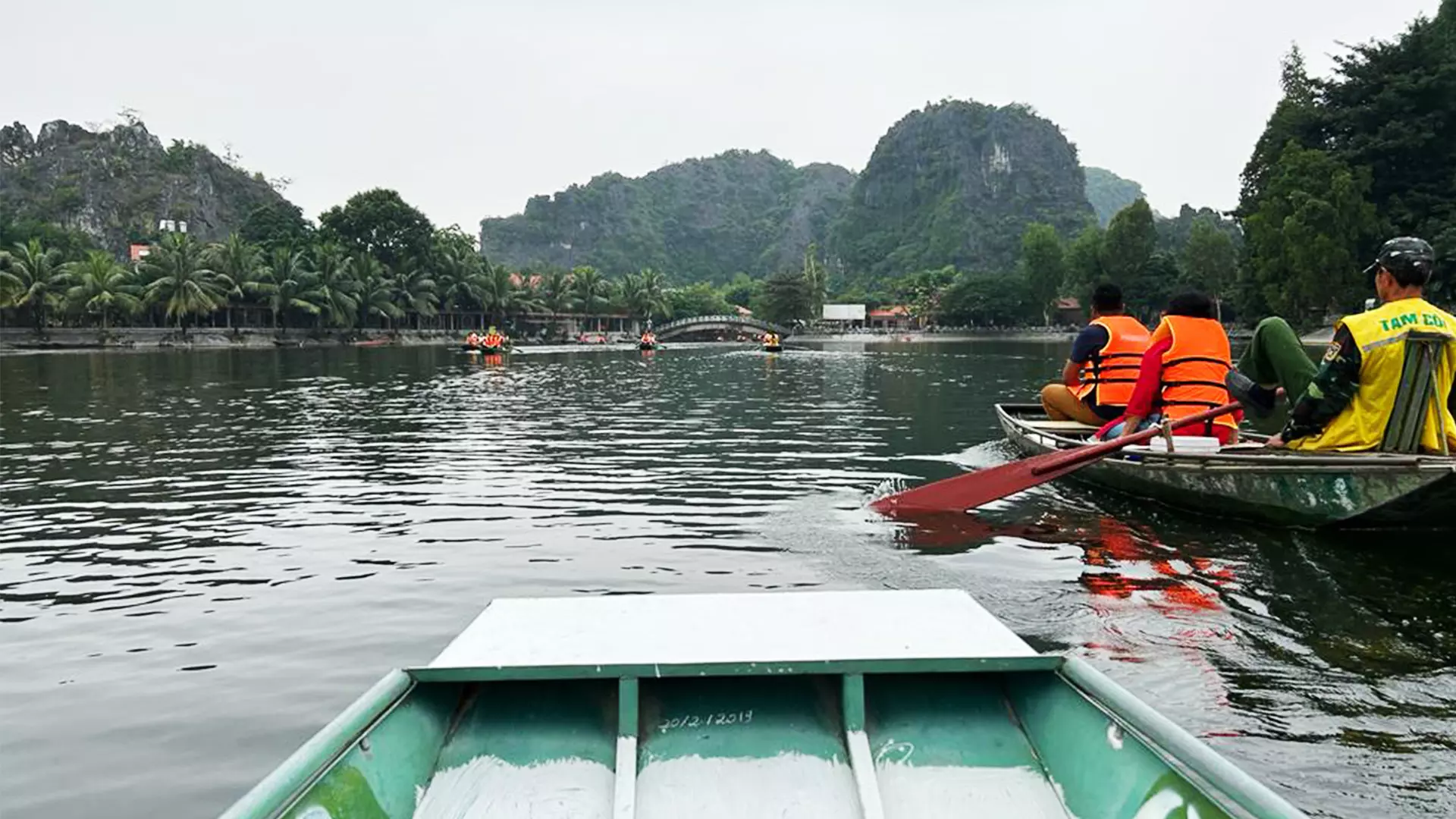
The cruise to Halong Bay, a two-hour journey from capital Ha Noi, offers an ethereal feeling.
Dr Phan An, head of the Southern Institute of Social Sciences, who strongly backs the pitch for UNESCO recognition, recently said: “The Cu Chi Tunnels’ architecture is one of a kind. UNESCO World Heritage Site acknowledgement would not just introduce global friends to it, but would also be a chance for Vietnamese nationwide to appreciate the relic more.”
“Publicity is still limited, leading to inadequate attention for preservation of the relic site,” Dr Phan said. “It runs a high risk of destruction from natural and human impact. So, if UNESCO acknowledges it as a World Heritage Site, local authorities and residents will be more responsible and collectively care for and preserve the entirety of the tunnels,” he added.
At the two war museums, thousands of American, French and even Australians turn up to check if there is any mention of units in which their grandfathers served during the fight in Vietnam.
“War nostalgia tourism is a big deal here. As is memorabilia like the iconic Sai Gon post office. This is one pillar of our tourism boost, the other being nature and adventure tourism,” said Vu The Binh.

The tunnel network.
The cruise to Halong Bay, a two-hour journey from capital Ha Noi, offers an ethereal feeling. “This looks like Behesht or Heaven, this is it,” says Ishita Tanjina from Bangladesh travelling with her family. “But the visit to the limestone caves gives one a taste of real adventure, as the many kayaking opportunities on islands enroute.”
Since there was a lot of support for Vietnam in West Bengal during the war, outside the War Museum, where hangs a copy of CPI-M ‘Ganashakti’ supporting Vietnamese resistance and opposing US expansionism, one can hear the famous Bengali slogans of the 1960s “Bhule Jabo Babar Naam, Bhulbo Na Vietnam (will forget my father's name, but not Vietnam)” and “Amar Naam Tomar Naam, Vietnam, Vietnam” (my name, your name, Vietnam, Vietnam)” reverberate in the air.
